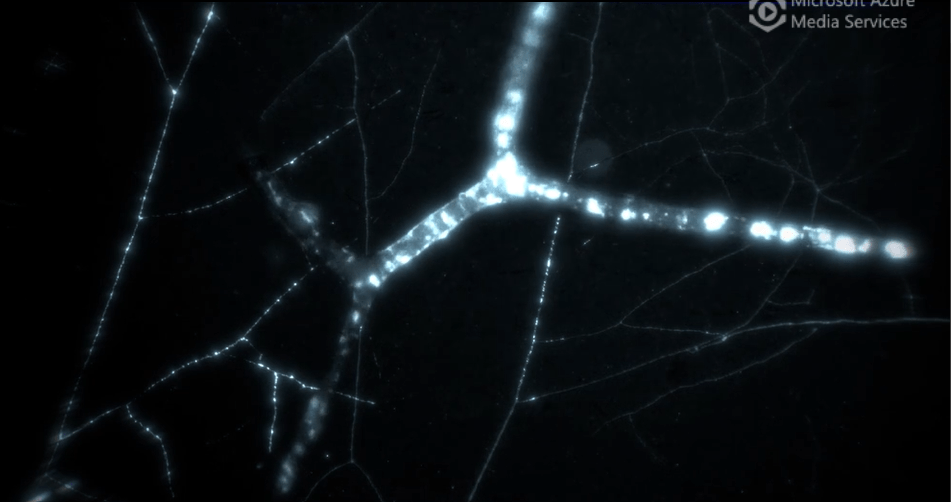Mycorrhizal fungi have been supporting life on land for at least 450 million years by helping to supply plants with soil nutrients essential for growth. In recent years, scientists have found that in addition to forming symbiotic relationships with nearly all land plants, these fungi are important conduits to transport carbon into soil ecosystems. In a meta-analysis publishing June 5 in the journal Current Biology, scientists estimate that as much as 13.12 gigatons of carbon dioxide equivalents (CO2e) fixed by terrestrial plants is allocated to mycorrhizal fungi annually—roughly equivalent to 36% of yearly global fossil fuel emissions.
Because 70%–90% of land plants form symbiotic relationships with mycorrhizal fungi, researchers have long surmised that there must be a large amount of carbon moving into the soil through their networks.
“We always suspected that we may have been overlooking a major carbon pool,” says author Heidi Hawkins, research lead at Conservation South Africa and research associate on plant-soil-microbe interactions at the University of Cape Town. “Understandably, much focus has been placed on protecting and restoring forests as a natural way to mitigate climate change. But little attention has been paid to the fate of the vast amounts of carbon dioxide that are moved from the atmosphere during photosynthesis by those plants and sent belowground to mycorrhizal fungi.”
Mycorrhizal fungi transfer mineral nutrients to and obtain carbon from their plant partners. These bi-directional exchanges are made possible by associations between fungal mycelium, the thread-like filamentous networks that make up the bulk of fungal biomass, and plant roots. Once transported underground, carbon is used by mycorrhizal fungi to grow a more extensive mycelium, helping them to explore the soil. It is also bound up in soil by the sticky compounds exuded by the fungi and can remain underground in the form of fungal necromass, which functions as a structural scaffold for soils.
The scientists know that carbon is flowing through fungi, but how long it stays there remains unclear. “A major gap in our knowledge is the permanence of carbon within mycorrhizal structures. We do know that it is a flux, with some being retained in mycorrhizal structures while the fungus lives, and even after it dies,” says Hawkins. “Some will be decomposed into small carbon molecules and from there either bind to particles in the soil or even be reused by plants. And certainly, some carbon will be lost as carbon dioxide gas during respiration by other microbes or the fungus itself.”
The paper is part of a global push to understand the role that fungi play in Earth’s ecosystems. “We know that mycorrhizal fungi are vitally important ecosystem engineers, but they are invisible,” says senior author Toby Kiers (@KiersToby), a professor of evolutionary biology at Vrije University Amsterdam and co-founder of the Society for the Protection of Underground Networks (SPUN). “Mycorrhizal fungi lie at the base of the food webs that support much of life on Earth, but we are just starting to understand how they actually work. There’s still so much to learn.”
But there’s a race against time to understand and protect these fungi. The UN Food and Agriculture Organization warns that 90% of soils could be degraded by 2050, and fungi are left out of most conservation and environmental policy. Without the fertility and structure that soil provides, the productivity of both natural and crop plants will rapidly decline.
“Mycorrhizal fungi represent a blind spot in carbon modeling, conservation, and restoration,” says co-author Katie Field (@KatieField4), a professor of plant-soil processes at the University of Sheffield. “Soil ecosystems are being destroyed at an alarming rate through agriculture, development, and other industry, but the wider impacts of disruption of soil communities are poorly understood. When we disrupt the ancient life support systems in the soil, we sabotage our efforts to limit global heating and undermine the health and resilience of the ecosystems on which we depend.”
“Many human activities destroy underground ecosystems. Besides limiting the destruction, we need to radically increase the rate of research,” says co-author Merlin Sheldrake (@MerlinSheldrake). “Organizations like SPUN, the Fungi Foundation, and GlobalFungi are leading a massive global sampling effort to create open-source maps of Earth’s fungal networks. These maps will help chart the properties of underground ecosystems, such as carbon sequestration hotspots, and document new fungal species able to withstand drought and high temperatures.”
The researchers emphasize that while their figures are based on the best available evidence, they are imperfect and should be interpreted with caution. “Although our numbers are only estimates, they are the best we are able to make with the data available. The limitations of our study make clear the urgent need for further empirical study of carbon and nutrient fluxes between plants and mycorrhizal fungi,” says Sheldrake.
###
This work was supported by Conservation International, the National Research Foundation, the European Research Council, the Natural Environment Research Council, NWO-VIDI, NOW-VICI, Methusalem, HFSP, the Jeremy and Hannelore Grantham Environmental Trust, and the Schmidt Family Foundation.
Current Biology, Hawkins et al. “Mycorrhizal mycelium as a global carbon pool” https://www.cell.com/current-biology/fulltext/S0960-9822(23)00167-7
Journal
Current Biology
DOI
10.1016/j.cub.2023.02.027
Method of Research
Experimental study
Subject of Research
Not applicable
Article Title
Mycorrhizal mycelium as a global carbon pool
Article Publication Date
5-Jun-2023


























